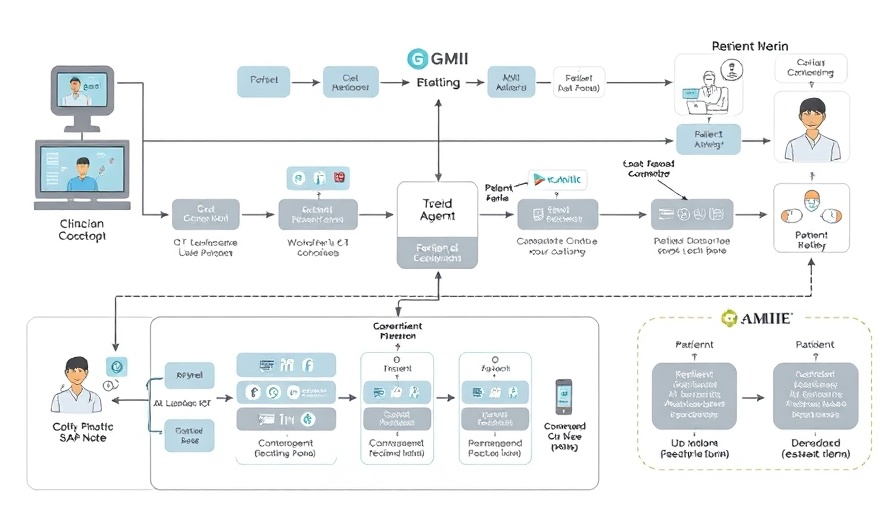
Revolutionizing Patient Interaction: Google's g-AMIE
In an era where technology meets healthcare, the introduction of Google's guardrailed-AMIE (g-AMIE) represents a significant advancement in conversational AI for the medical field. Designed to enhance accountability in patient interactions, this system employs a multi-agent architecture aimed at ensuring that patient care remains safe, effective, and compliant with medical regulations.
The Importance of Accountability in Medical AI
As healthcare technology progresses, the complexity and variety of interactions between patients and AI-driven tools increase. Historically, accountability has been maintained through strict regulations ensuring that only licensed medical professionals can provide critical diagnoses and treatment recommendations. The g-AMIE system mirrors this critical oversight. By incorporating an experienced physician’s approval into the diagnostic process, patient safety is prioritized while leveraging the efficiencies of AI.
How g-AMIE Works: A Closer Look
The architecture of g-AMIE emphasizes separation of responsibilities among agents to optimize patient intake, documentation, and clinician oversight. The AI primarily carries out symptom intake through interactive dialogues, documenting details without issuing medical advice. This stringent approach not only keeps patients informed but also ensures that medical decisions are left in the hands of trained professionals. The guardrail agent acts as a pivotal check, evaluating each interaction before any potential advice is rendered to the user. This separation allows healthcare providers to focus on their expertise while embracing AI as a supportive tool, improving overall efficiency.
Enhancing Workflow with Advanced Features
The system's design incorporates innovative features, such as the SOAP (Subjective, Objective, Assessment, Plan) note generation, which organizes patient information for easy access and understanding. Physicians can then review these summaries in a dedicated cockpit that promotes interactive decision-making. The introduction of chain-of-thought reasoning enhances the quality of AI-produced documentation, making the approval process smoother for clinicians. This creates an intricate workflow that not only amplifies accessibility to quality care but also empowers medical professionals with tools that facilitate more informed decision-making.
Assessing Effectiveness: Rigorous Testing
The research team conducted a randomized, blinded Objective Structured Clinical Examination (OSCE) to evaluate g-AMIE's efficacy, comparing its performance against control groups. Initial feedback suggests that this AI tool enhances the accuracy of clinical interactions while preserving essential elements of human oversight. In an increasingly AI-driven world, balancing technological efficiency with human expertise becomes paramount. Healthcare providers, especially small and medium-sized practices, can benefit significantly from embracing such advanced systems, which can ultimately lead to better patient outcomes.
Future Predictions: AI in Healthcare
As g-AMIE paves the way for broader acceptance of AI in healthcare, we can anticipate more innovations that integrate human judgment with intelligent technology. The capability of AI to manage and streamline routine medical tasks indicates a future where physicians can dedicate more time to patient care rather than administrative responsibilities. For small and medium-sized businesses in healthcare, adopting such tools will be crucial for remaining competitive and offering high standards of patient care.
Conclusion: A Call to Action for Healthcare Providers
With advancements like Google’s g-AMIE, the healthcare landscape is transforming. As small and medium-sized healthcare businesses look to enhance service delivery and patient satisfaction, it is essential to explore AI technologies that ensure accountability while supporting clinical processes. Engaging with these innovations not only improves practice efficiency but also fosters a safer environment for patients. Now is the time for health providers to integrate such cutting-edge technologies into their practices, ensuring a brighter future for patient care.
 Add Row
Add Row  Add
Add 



Write A Comment